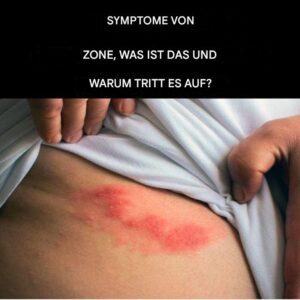Introduction – What Is Shingles?
Shingles (Herpes Zoster) is a painful viral infection caused by the reactivation of the chickenpox virus (Varicella-Zoster Virus, VZV). If you’ve had chickenpox before, the virus remains dormant in your nervous system and can resurface years later as shingles.
The condition is characterized by burning pain and a blistering rash, often appearing in a band-like pattern on one side of the body. But why does it occur, and how can you recognize it early?
Symptoms of Shingles – How Does It Manifest?
Shingles symptoms typically develop in stages:
Early Warning Signs (Before the Rash Appears)
-
Tingling, itching, or burning sensation on one side of the body
-
Sensitivity to touch
-
Flu-like symptoms (fatigue, fever, headache)
Active Phase (Rash & Blisters)
-
Painful red rash (usually on the torso, face, or neck)
-
Fluid-filled blisters that crust over in 7–10 days
-
Itching and tenderness in the affected area
Possible Complications
-
Postherpetic neuralgia (PHN) – Persistent nerve pain after the rash heals
-
Vision loss (if shingles affects the eye)
-
Skin infections from scratching
Why Does Shingles Occur? Key Causes & Risk Factors
Shingles reactivates when the immune system weakens, allowing the dormant VZV to flare up. Common triggers include:
Primary Risk Factors
✔ Age (50+) – Immune function declines with age.
✔ Stress – Chronic stress weakens immunity.
✔ Weakened Immune System – Due to illnesses (HIV, cancer) or medications (chemotherapy, steroids).
✔ Previous Chickenpox Infection – Only those who’ve had chickenpox can develop shingles.
Introduction – What Is Shingles?
Shingles (Herpes Zoster) is a painful viral infection caused by the reactivation of the chickenpox virus (Varicella-Zoster Virus, VZV). If you’ve had chickenpox before, the virus remains dormant in your nervous system and can resurface years later as shingles.
The condition is characterized by burning pain and a blistering rash, often appearing in a band-like pattern on one side of the body. But why does it occur, and how can you recognize it early?
Symptoms of Shingles – How Does It Manifest?
Shingles symptoms typically develop in stages:
Early Warning Signs (Before the Rash Appears)
-
Tingling, itching, or burning sensation on one side of the body
-
Sensitivity to touch
-
Flu-like symptoms (fatigue, fever, headache)
Active Phase (Rash & Blisters)
-
Painful red rash (usually on the torso, face, or neck)
-
Fluid-filled blisters that crust over in 7–10 days
-
Itching and tenderness in the affected area
Possible Complications
-
Postherpetic neuralgia (PHN) – Persistent nerve pain after the rash heals
-
Vision loss (if shingles affects the eye)
-
Skin infections from scratching
Why Does Shingles Occur? Key Causes & Risk Factors
Shingles reactivates when the immune system weakens, allowing the dormant VZV to flare up. Common triggers include:
Primary Risk Factors
✔ Age (50+) – Immune function declines with age.
✔ Stress – Chronic stress weakens immunity.
✔ Weakened Immune System – Due to illnesses (HIV, cancer) or medications (chemotherapy, steroids).
✔ Previous Chickenpox Infection – Only those who’ve had chickenpox can develop shingles.

